Floor heating convectors: structural and functional features
Floor heating convectors are gaining increasing popularity due to the numerous advantages of their operation. They successfully complement or completely replace the classic radiator systems.
But let's talk about everything in more detail.
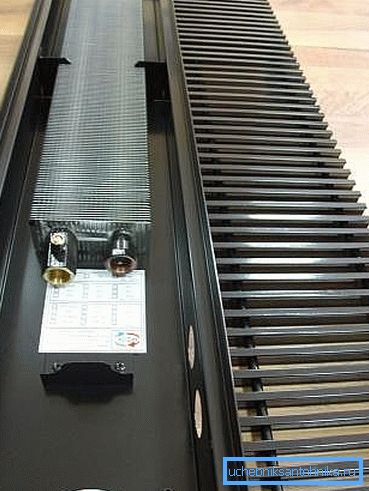
General provisions
Floor heating radiators perform convection and heating of air masses, located in an underground space. Such features of functioning guarantee them a lot of positive moments:
Merits
- High efficiency due to optimization of heat flow distribution. All of us from the school physics course know that warm air rises, which means that in this case it will move from the floor to the ceiling, covering the areas most used by people.
In radiator heating, the movement of heated air masses begins from the walls, as a result of which a kind of arc is formed, which ignores the central areas of the rooms. This difference immediately gives several advantages:
| Advantage | Description |
| Preservation of health | Due to the constant presence of feet in the warmth, prevention of colds is carried out. |
| Saving | Rational heating of the room requires less energy costs |
| Increased comfort | There are no cold zones |
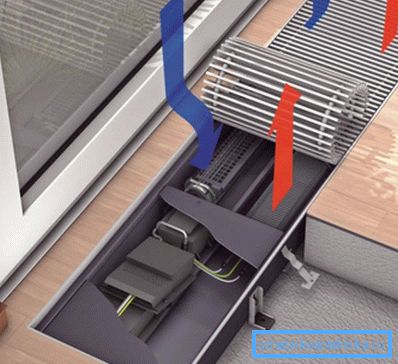
- Aesthetics. The entire visible part consists of a decorative grille, which is incomparably more attractive than the metal pipeline encircling the room.

- Multifunctionality. In hot weather, the described equipment can act as an air conditioner and blow out not warm, but, conversely, cooled air.
- Security. The above-mentioned decorative grille can heat up to no more than 20-30 degrees Celsius, which poses no danger if it comes into contact with bare human skin. You can not say about radiator batteries that can cause painful burns.
- Easy to use do-it-yourself. Full automation control allows you to set timers, accurately regulate the temperature and air supply, set the work cycle.

- The possibility of combining with any other heating systems.
- Acceptable price. With all the unique features of the convector, its purchase, installation and operation are within the limits of any other similar heating system.
- Wide range of applications. Due to the ability to create specified microclimatic conditions, the considered units are used not only in residential and office premises, but also in greenhouses, winter gardens, museums, swimming pools and other public and industrial buildings.

Disadvantage
To the negative points can be attributed only the complexity of the installation. The installation instruction of the floor heating convector requires the participation of a qualified technician.
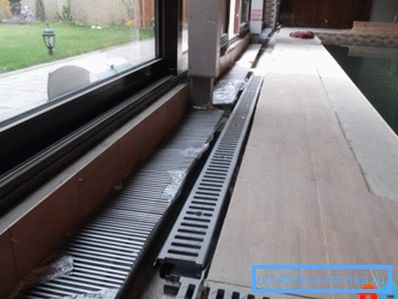
Device
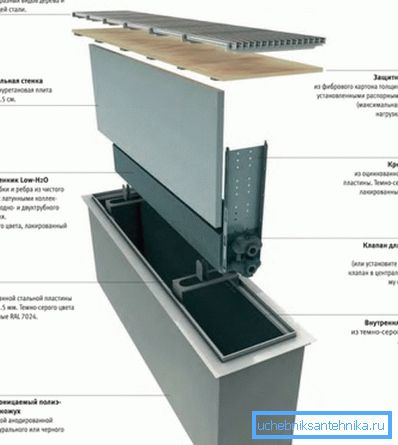
The design of the floor convector does not have several very important elements:
Structure
- Stainless steel box length from 900 to 3000 mm. It serves as a kind of housing to accommodate all the other equipment.
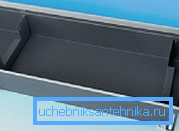
- Copper-aluminum heat exchanger, made in the form of a cluster of tubes. From its additional equipment depends on the type of convection:
| Type of convection | Heat exchanger |
| Natural | Single or double without additional mechanical devices |
| Forced | Unary or double reinforced with tangential fan |
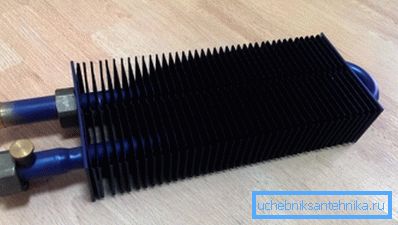
Tip: for buildings with a large area, it is recommended to choose equipment with forced convection, since the natural can not cope with the timely heating of a large amount of air masses.
- A set of stainless steel tubes for connection to a common heating system.
- Programmable thermostat to maintain the set temperature.
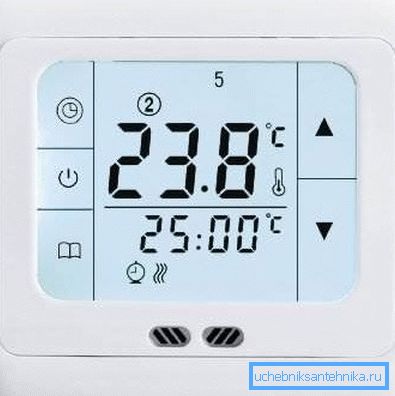
- Valve for air release. Will protect from formation of air pockets in pipes.
- A support from a galvanized steel plate one and a half millimeters thick.
Tip: be sure to make sure before buying that the entire interior is made of stainless materials. In the opposite case, the deposited condensate will cause corrosive processes.
- The separation wall, which is a polyurethane plate with a thickness of 25 mm.
- Decorative grille. Closes the entire unit, being its final part. Usually made of wood or aluminum for the interior of your home.
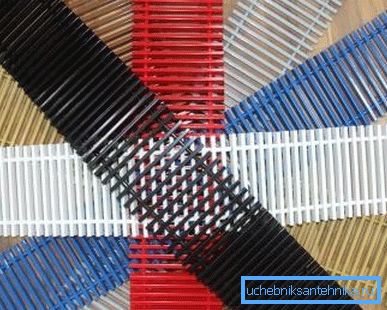
Principle of operation
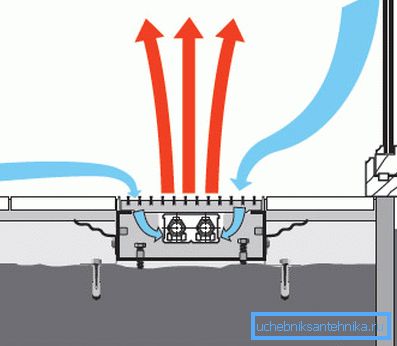
In fact, the principle of operation of the equipment in question is very similar to the classic radiator systems:
- In the heat exchanger pipe is supplied coolant.
- Cold air masses are drawn from above. In forced systems, this contributes to a special fan.
- Inside the air is heated, and then rises.
The main difference from radiators is that in this case the heating is carried out in a horizontal rather than a vertical plane, which in practice is much more rational.
Installation of the unit is carried out in the process of installing a subfloor, which can be done by pouring concrete or building wooden lags. From above, any floor finishing covering you like fits.
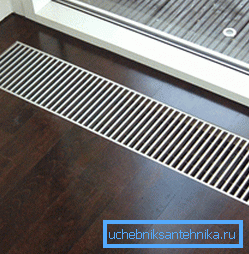
Conclusion
The use of floor convectors as a heating system has many advantages. The main one is the more rational direction and distribution of heated air, inherent in any underfloor heating.
The implementation of the warm-up from bottom to top allows you to create an optimal microclimate for living or performing other tasks. The design of such equipment does not constitute anything too complicated, but still it is better to invite a specialist to carry out the installation work.
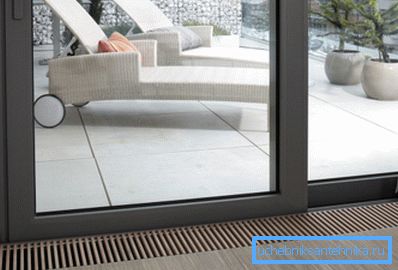
The video materials located in this article will acquaint you with additional information regarding the topic presented. Use the achievements of current technology to improve comfort in your own home.